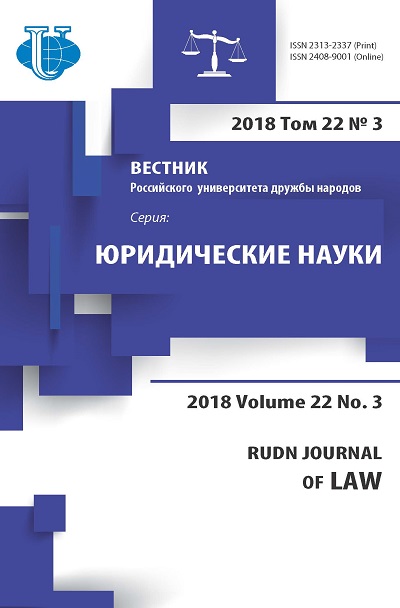The legal status of the East African Community (EAC)
- Authors: Njenga L.N1
-
Affiliations:
- Peoples` Friendship University of Russia
- Issue: Vol 22, No 3 (2018)
- Pages: 370-384
- Section: INTERNATIONAL LAW
- URL: https://journals.rudn.ru/law/article/view/20774
- DOI: https://doi.org/10.22363/2313-2337-2018-22-3-370-384
- ID: 20774
Cite item
Full Text
Abstract
The history of the “metamorphosis” of the East African Community (hereafter the EAC), though for the period of over a decade, is not so different from other international regional organizations. For example, the European Economic Community (hereafter the EEC) also underwent some ‘transformation’ before eventually becoming the EU[49]. More particularly, the article reflects on the early stages of the formation of the EAC, its early challenges and how it may have overcome them to attain its present status. Further, the article reflects on the roles and functions of the East African Community organs and institutions and at the same time touch on the important documents as legal instruments that have been adopted and ratified by the partner states. Additionally, the article will reflect on how effective the EAC has been in its commitment to observe the principles of democracy, the rule of law and social justice so as to show that the EAC stands out from other regional economic organizations in the continent. In conclusion this article will show that the history of the existence of the EAC and its re-establishment in 2000, give grounds to embrace its legal status especially following one of their objectives to form a federation among other principles listed in the treaty, which are in line with the general principles of International law.
About the authors
Lily N Njenga
Peoples` Friendship University of Russia
Author for correspondence.
Email: njengalily01@gmail.com
Postgraduate student, Department of International Law, Law Institute, RUDN University
Mikluho-Maklaya, 6, Moscow, Russia, 117198References
- Whitaker. P 1964. Political Theory and East African Problems // London Oxford University Press, 1964, p. 84.
- Possi. A 2013 The East African Court of Justice: Towards Effective Protection of. Human Rights in the East African Community // Max Planck Year book of United Nations Law, volume 17,2013, pp. 173-195.
- Njenga L.N. (2015a) Regional Integration in Africa: The East African Community in the context of international relations // Материалы XIII Всероссийской школы молодых африканистов. Москва, 17-18 ноября 2015 года. М: Институт Африки Российской Академи Наук, 2015. С. 64-66.
- Njenga. L. N. (2015b) Activities of the Court of the East African Community, Eurasian Law Journal, №12 (91), pp. 55-57.
- Stefan Reith, Ritz Boltz. 2011.The East African Community: Regional and Integration between aspiration and reality // KAS International reports 9.10.2011.
- Sebalu, P.1972 The East African Community. Journal of African Law. 1972 Vol. 16, No. 3, pp. 345-363.
- Abashidze A, Koneva A, Soltsev A. (2016). Africa in the Shadow of Tomorrow // Kazan Journal of International Law and International Relations. 2016, pp. 35-38.
- Johnson O. E.G. (1991). Economic Integration in Africa: Enhancing prospects for success // The Journal of Modern African Studies N. 29,1 (1991), pp. 1-26.
- Helfer Laurence R. (2015) Sub-regional Courts in Africa: Litigating the Hybrid Right to Freedom of Movement // iCourts Working Paper Series, No. 32, 2015.
- Gathii James Thuo (2011). African Regional Trade Agreements as Legal Regimes // Cambridge University press 2011, pp. 188-190.
- Muko Ochanda R., Kisolo Wakinya P., Omondi Odipo W. (2013). Human Rights in the Context of Deepening Integration of East African Community (EAC) // Postmodern Openings, Volume 4, Issue 2, June 2013, pp. 47-73.
Supplementary files















